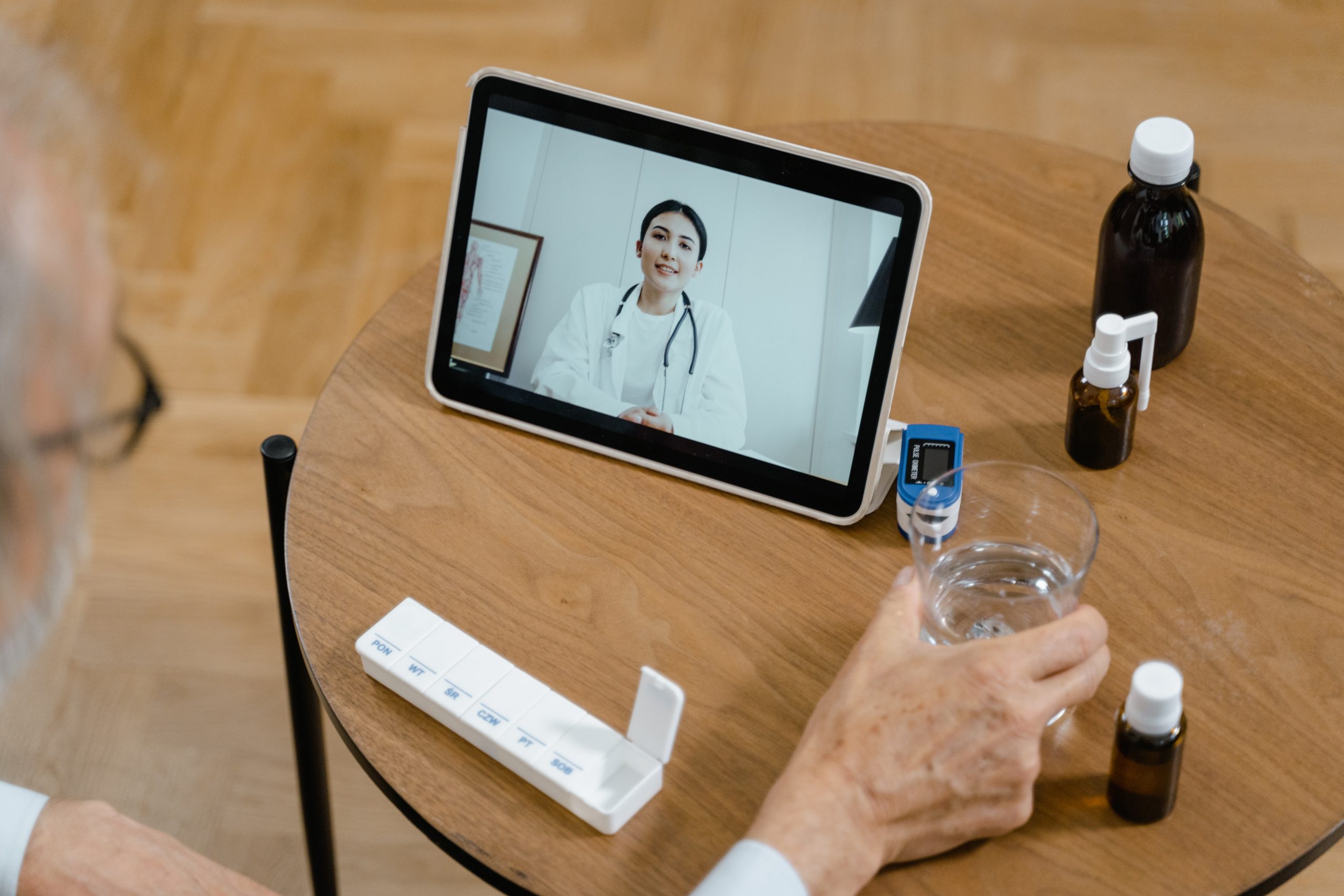Telemedicine in Healthcare
Posted in Health & Wellness on November 18, 2021

At the beginning of 2020, 41-42% of people have admitted delaying care or avoiding going to the doctor. Telemedicine has made it possible to gain treatment virtually with the comfort of staying home.
What is Telemedicine?
Telemedicine is the process of receiving medical attention using technology. The three types of telemedicine are:
- Store-and-Forward Telemedicine
- Healthcare providers, primary care, and patients can access information when convenient.
- It is primarily used for diagnoses and treatments in specialties such as dermatology, ophthalmology, and radiology.
- Healthcare providers, primary care, and patients can access information when convenient.
- Remote Patient Monitoring
- Professionals can consistently track their patients to avoid potential risks.
- Focused on high-risk patients or people recently released from hospitals.
- Professionals can consistently track their patients to avoid potential risks.
- Real-time Telemedicine
- Video conferencing replaces traditional in-person visits.
- Popular in place of primary care, follow-ups, urgent care visits, and prescription management for chronic illnesses.
- Video conferencing replaces traditional in-person visits.
Telemedicine Statistics
- The telemedicine market is projected to be valued at $396.76 billion by 2027
- In 93% of encounters, clinicians see telemedicine as a satisfactory form of healthcare
- 85% of patients have reported positive experiences from telemedicine services
- 83% of patients expect to use telemedicine after the pandemic resolves.
- 74% of Millennials have said they prefer telemedicine over in-person visits
What are the Benefits of Telemedicine?
While telemedicine doesn’t eliminate face-to-face encounters with doctors and specialists, there are many benefits, including:
- Easier access to healthcare specialists
- Flexible scheduling
- Convenience
- Reduced exposure of illnesses to other patients
- Cheaper than in-person visits
Are there Risks of Telemedicine?
There is potential for risks to be included with every new development, and telemedicine is no different. Risks may include:
- Privacy and Confidentiality Concerns
- Lack of Technical Skills
- Insurance Issues
- Potential Misdiagnosis
- Fraud
Remaining informed about telemedicine could help decide future healthcare decisions.